Mange Issue 01: Pupusas
Mange (pronounced “mohnj”) is a zine about food futures and eating experiences. Each issue uses AI to explore one food item. Issue one introduces possible fillings and eating rituals for the Salvadoran street food Pupusas.
Text is in English and Spanish.
Mange (pronunciado “mohnj") es un fanzine sobre los futuros de la comida y las experiencias de comer. Cada número utiliza la inteligencia artificial para explorar un artículo alimenticio. El primer número presenta posibles rellenos y rituales de consumo para la comida callejera salvadoreña, las Pupusas.
El texto está en inglés y español.

Prism (series A)
Part of an ongoing series of vintage postcards transformed by flow lines and moments of pause.
︎Tap image to view next Prism no.








︎︎︎ and now, an archive of select experiments and installations
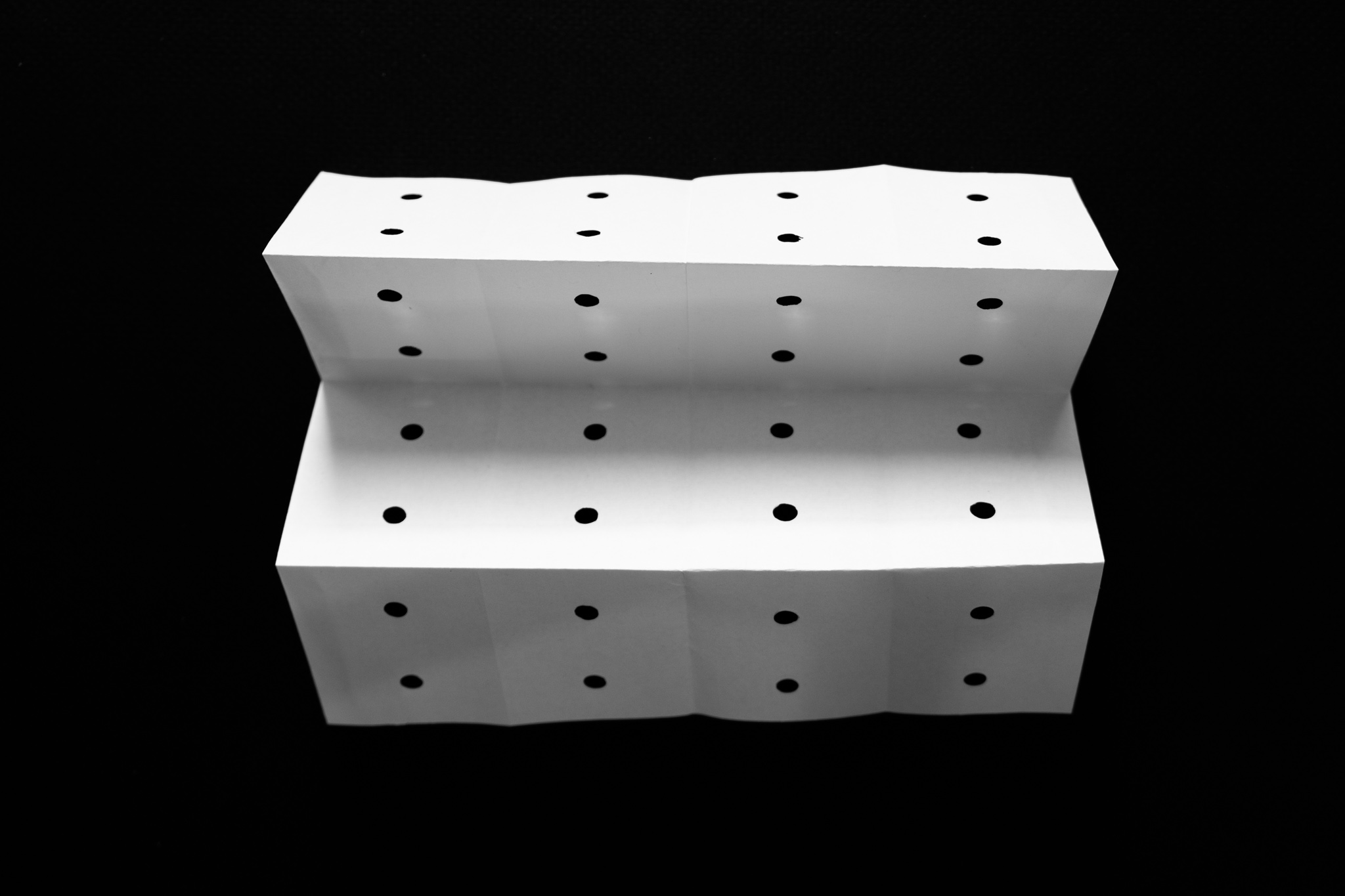
Holes in Space
This series revisits an form study exercise where I was tasked with producing images using a hole puncher. In this edition, I study the limites of the hole puncher’s reach as a physical constraint in order to create a rationale for folding paper to create rythmic punctures and patterns. *publication in progress
This series revisits an form study exercise where I was tasked with producing images using a hole puncher. In this edition, I study the limites of the hole puncher’s reach as a physical constraint in order to create a rationale for folding paper to create rythmic punctures and patterns. *publication in progress

Braque Meets Hejduk
Braque meets Hejduk is a typographic experiment inspired by three shapes, the color yellow and a cast shadow. *work in progress
Braque meets Hejduk is a typographic experiment inspired by three shapes, the color yellow and a cast shadow. *work in progress
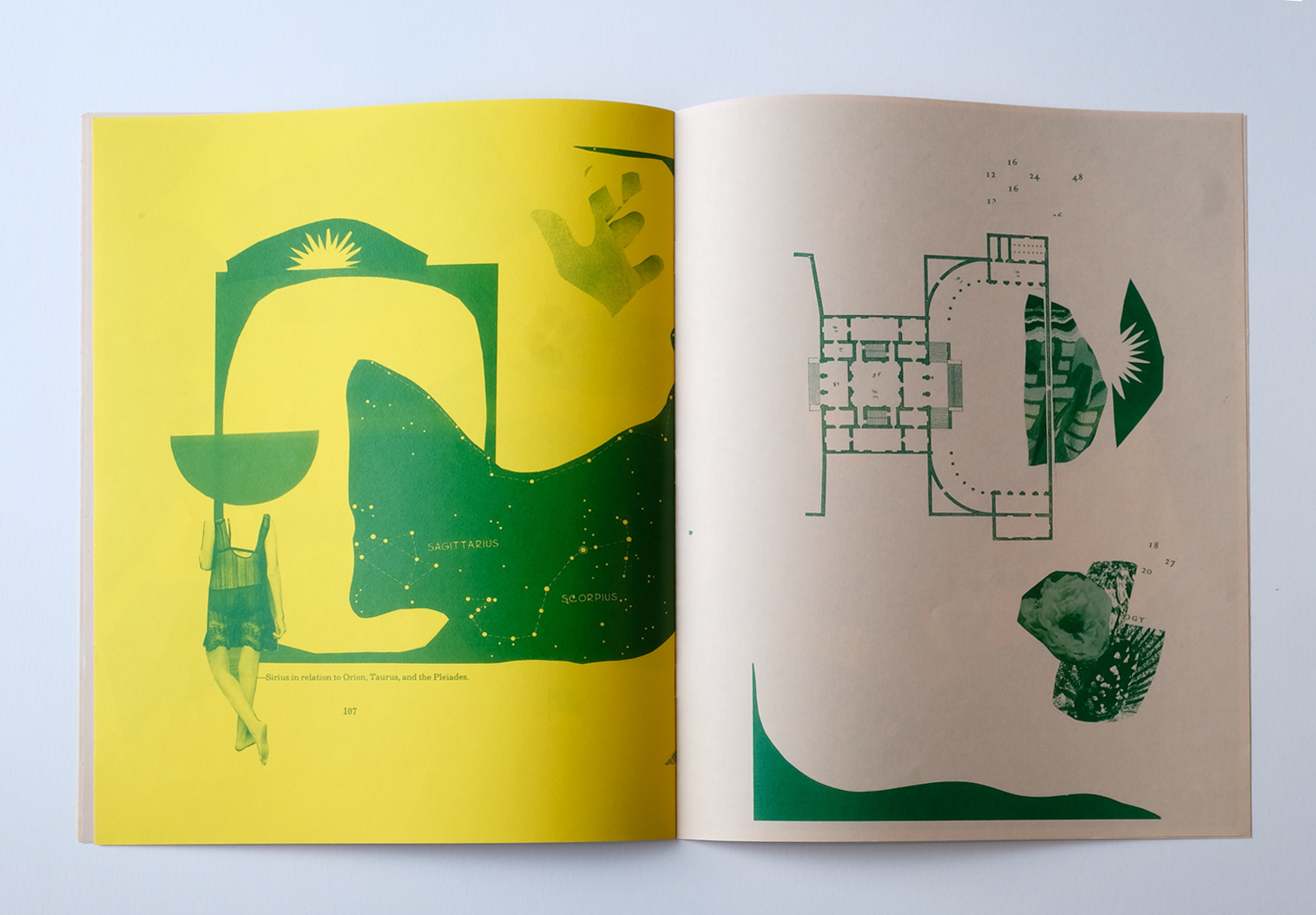
Portals/ Orbits/ Scape/ Holes/ Land
Portals/ explores landscape form through abstract imagemaking. It was a limited edition publication in collaboration with Megan Lynch sold for the 2019 SF Art Book Fair.
Portals/ explores landscape form through abstract imagemaking. It was a limited edition publication in collaboration with Megan Lynch sold for the 2019 SF Art Book Fair.

Hand. Food. Mouth.
Hand. Food. Mouth is a publication about eating and wasting in the public domain. The work is composed of generative design research and various choreographies that map the relationship between the body and the meal. *A second edition is in progress ...
Hand. Food. Mouth is a publication about eating and wasting in the public domain. The work is composed of generative design research and various choreographies that map the relationship between the body and the meal. *A second edition is in progress ...

Trash Cam
Trash Cam is an ongoing catalog of waste seen throughout my day-to-day and travels. Check out wastefutures for recent captures.
Trash Cam is an ongoing catalog of waste seen throughout my day-to-day and travels. Check out wastefutures for recent captures.

Pocket Picnics
Pocket Picnics is a design fiction prototype for eating street food served on personal food gloves. It’s a playful reimagining for consumers eating on the go and their efforts reduce waste in the public domain.
Exhibited at
MFA Design Thesis Show, 2018
FoodInno Symposium, 2018
Primer Conference, 2018
Pocket Picnics is a design fiction prototype for eating street food served on personal food gloves. It’s a playful reimagining for consumers eating on the go and their efforts reduce waste in the public domain.
Exhibited at
MFA Design Thesis Show, 2018
FoodInno Symposium, 2018
Primer Conference, 2018
Memory Plastique
Memory Plastique is a choreography of hands and amalgamated plateforms* designed to elevate intimate eating gestures.
Memory Plastique is a choreography of hands and amalgamated plateforms* designed to elevate intimate eating gestures.
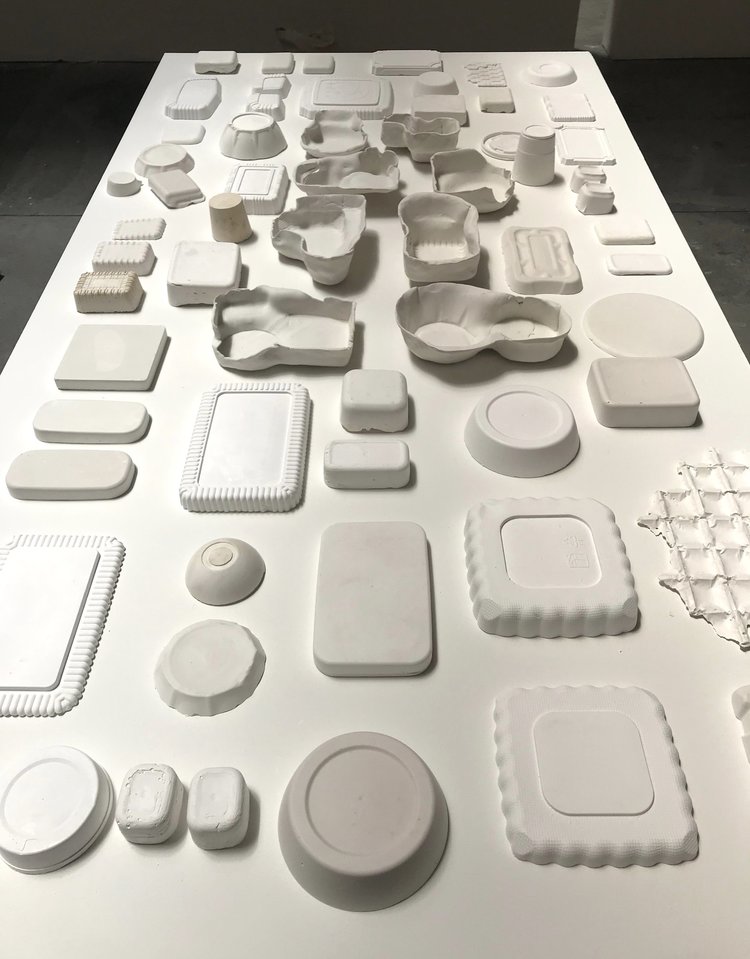

Cradle
Cradle is a plate-form series made from collecting people’s lunch packaging by stacking those forms to create new mass-objects. The artefacts are aranged to reflect the forms used for eating and wasting in the public domain.
Cradle is a plate-form series made from collecting people’s lunch packaging by stacking those forms to create new mass-objects. The artefacts are aranged to reflect the forms used for eating and wasting in the public domain.
Exhibited at
CCA Curator’s Award, 2018-2019
La Comida es Medicina, 2018
CCA Commencement Show, 2018
Craft of Use Exhibition, 201
CCA Curator’s Award, 2018-2019
La Comida es Medicina, 2018
CCA Commencement Show, 2018
Craft of Use Exhibition, 201
Past Futures, an edible insect dinner
This pop up event hosted by Don Bugito aimed at creating a dialogue for guests to taste pre-colombian ingredients with insects as sustainable protein futures. The poster-menu was designed for guests to take home as a memento of this eating experience.
Menu designed exclusively for the February 8, 2018 dinner at O2 Artisans Aggregate, Oakland California
This pop up event hosted by Don Bugito aimed at creating a dialogue for guests to taste pre-colombian ingredients with insects as sustainable protein futures. The poster-menu was designed for guests to take home as a memento of this eating experience.
Menu designed exclusively for the February 8, 2018 dinner at O2 Artisans Aggregate, Oakland California

James Goggin Poster
This poster was created for a performance lecture by James Goggin at the California College of the Arts. The images were coded in processing and printed in risograph.
This poster was created for a performance lecture by James Goggin at the California College of the Arts. The images were coded in processing and printed in risograph.

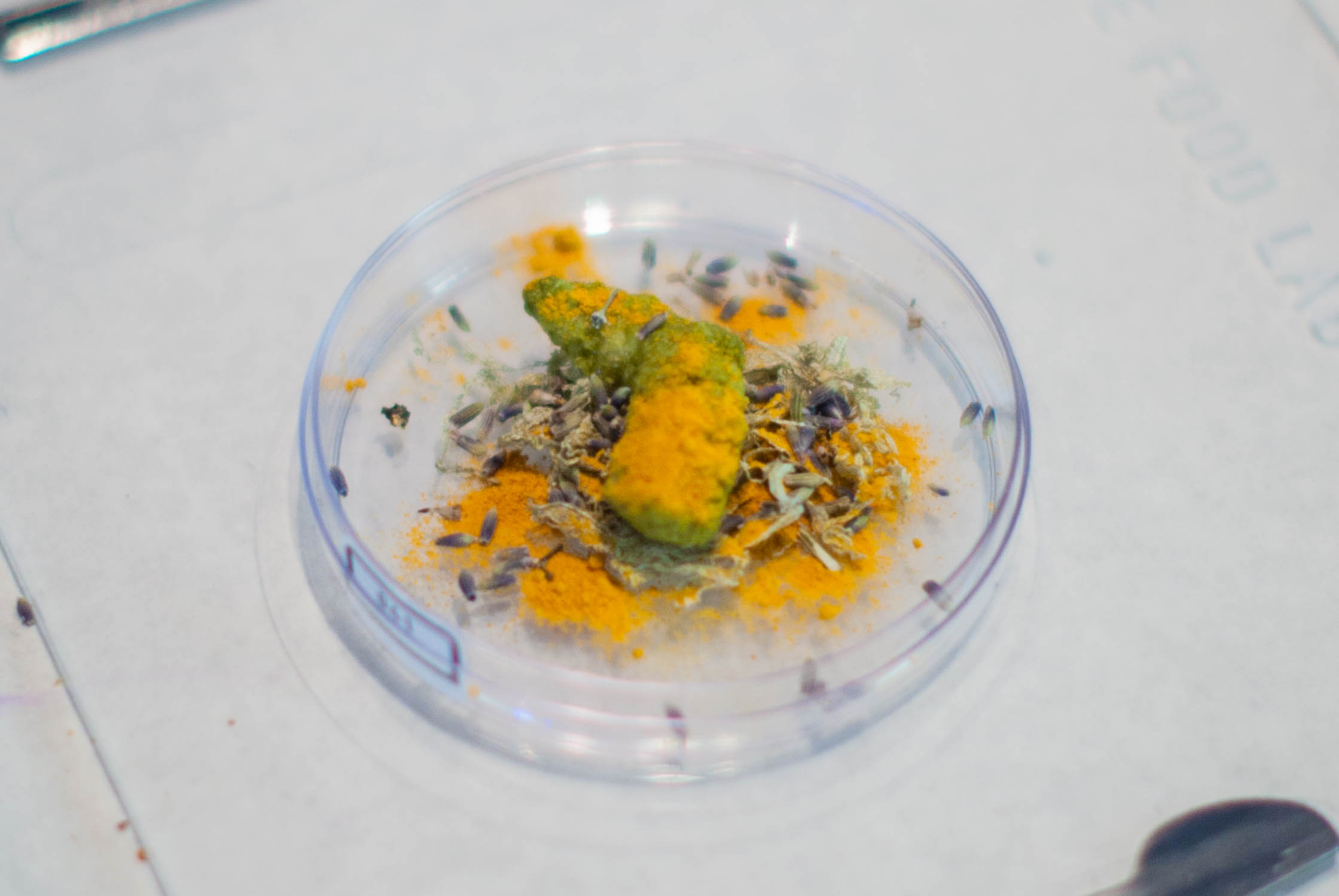

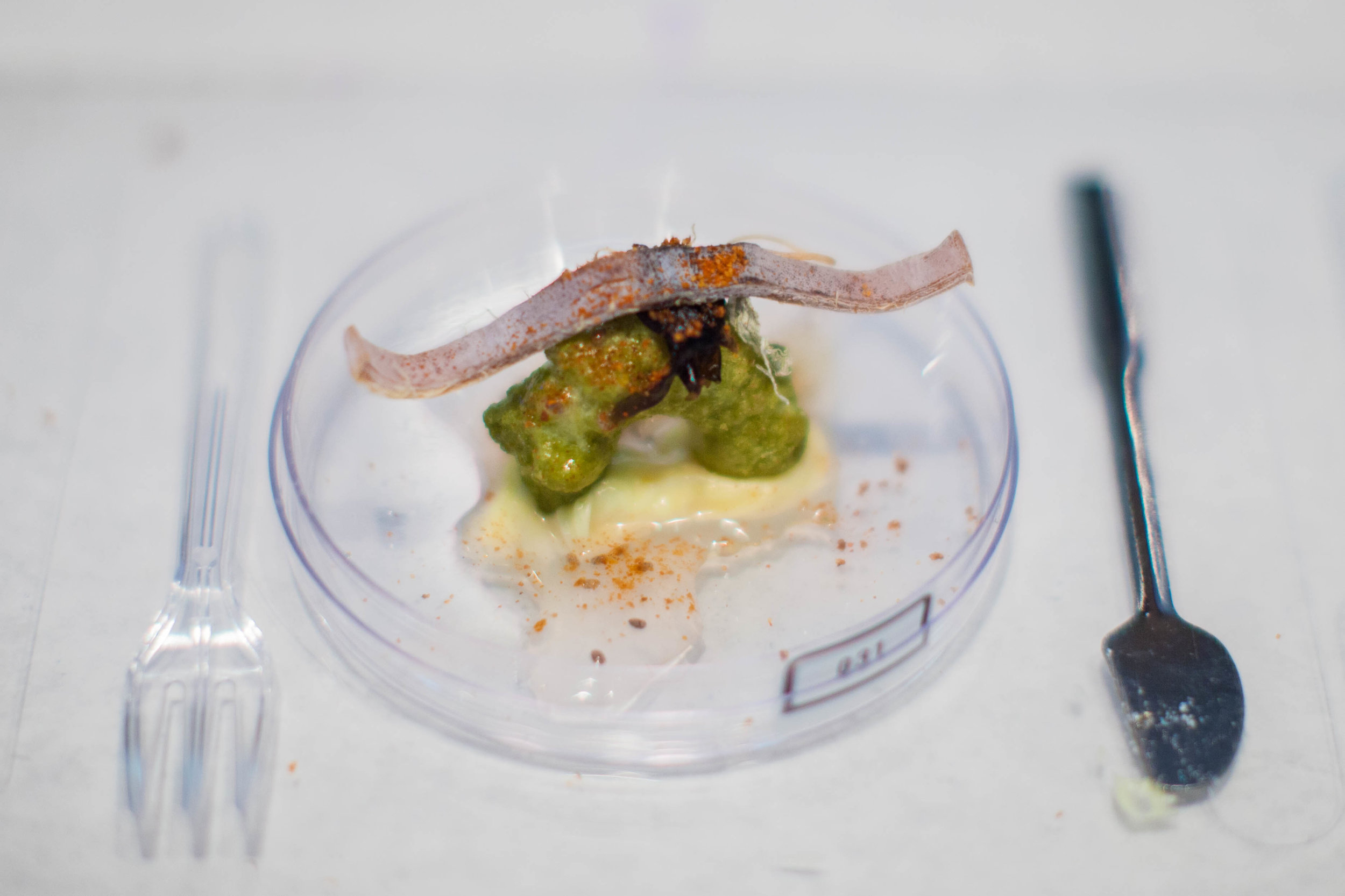
Sweet Space
A food making experience co-designed with Yunwen Tu for the annual annual CCA-hosted Nightlife Event at the California Academy of Sciences. We presented ourselves as space harvesters who sampled various ingredients from another planet and asked guests to help concoct recipes. 100 Space Desserts were created and consumed at the night of the event.
A food making experience co-designed with Yunwen Tu for the annual annual CCA-hosted Nightlife Event at the California Academy of Sciences. We presented ourselves as space harvesters who sampled various ingredients from another planet and asked guests to help concoct recipes. 100 Space Desserts were created and consumed at the night of the event.
et sens
Et Sens is a culinary mail-order service for consumers to reclaim sensory eating experiences using smells, textures and flavors from the past.
The concept is set in 2027 where tactile eating experiences are highly sought after due to rising temperatures, causing a world-wide decline of big agro.
Presentated at
The Institute for the Future, Palo Alto, 2017
Speculative Futures Meet Up, SF, 2017
Et Sens is a culinary mail-order service for consumers to reclaim sensory eating experiences using smells, textures and flavors from the past.
The concept is set in 2027 where tactile eating experiences are highly sought after due to rising temperatures, causing a world-wide decline of big agro.
Presentated at
The Institute for the Future, Palo Alto, 2017
Speculative Futures Meet Up, SF, 2017
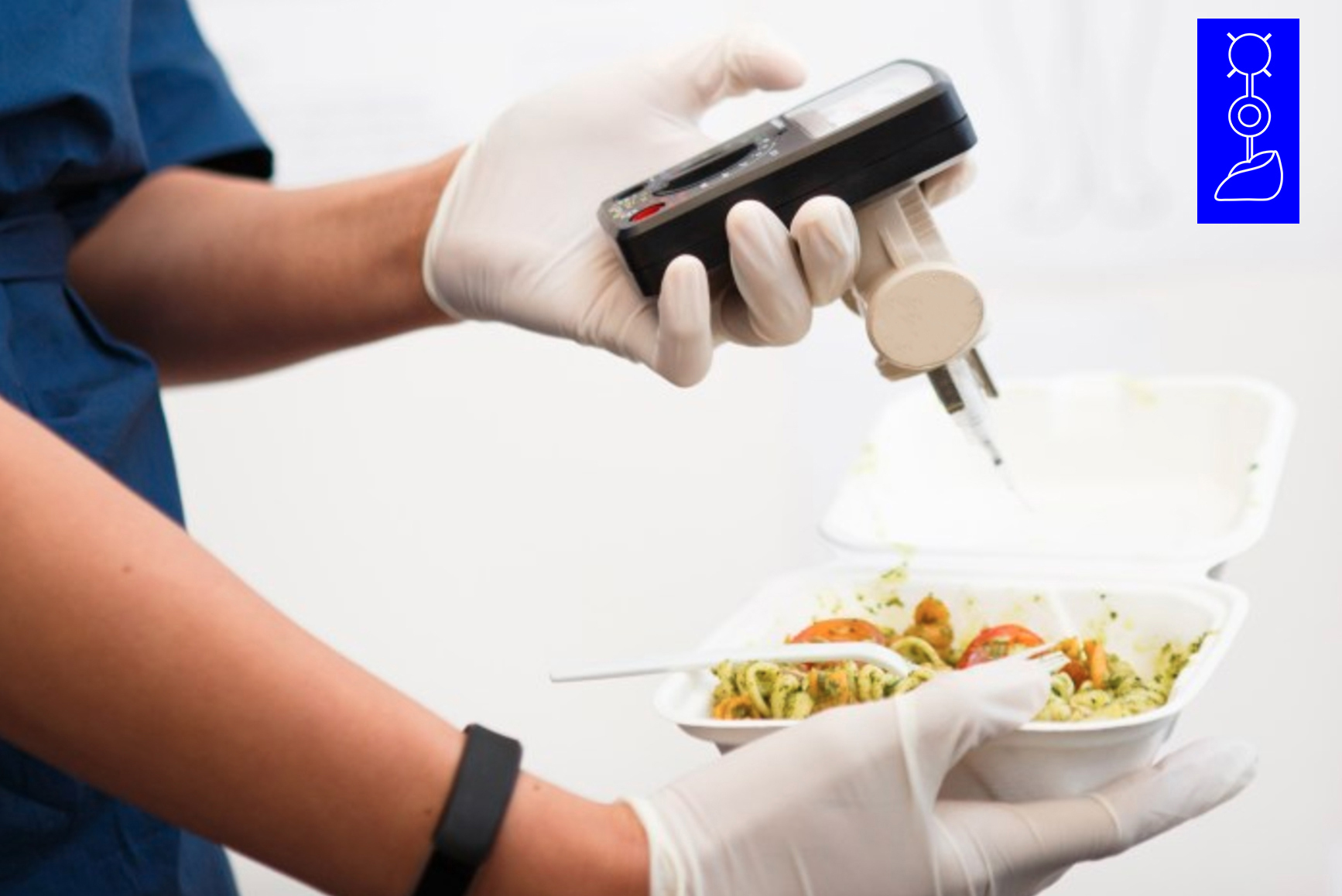
Probes
What if redistributed leftovers were managed by the local government? What tools are needed to conduct safe food checks?
This design fiction project imagines a government-led program where Food Agents work in the back alleys of food vendors to verify safe consumption of second-hand food.
Presentated at
The Institute for the Future, Palo Alto, 2017
Speculative Futures Meet Up, SF, 2017
What if redistributed leftovers were managed by the local government? What tools are needed to conduct safe food checks?
This design fiction project imagines a government-led program where Food Agents work in the back alleys of food vendors to verify safe consumption of second-hand food.
Presentated at
The Institute for the Future, Palo Alto, 2017
Speculative Futures Meet Up, SF, 2017
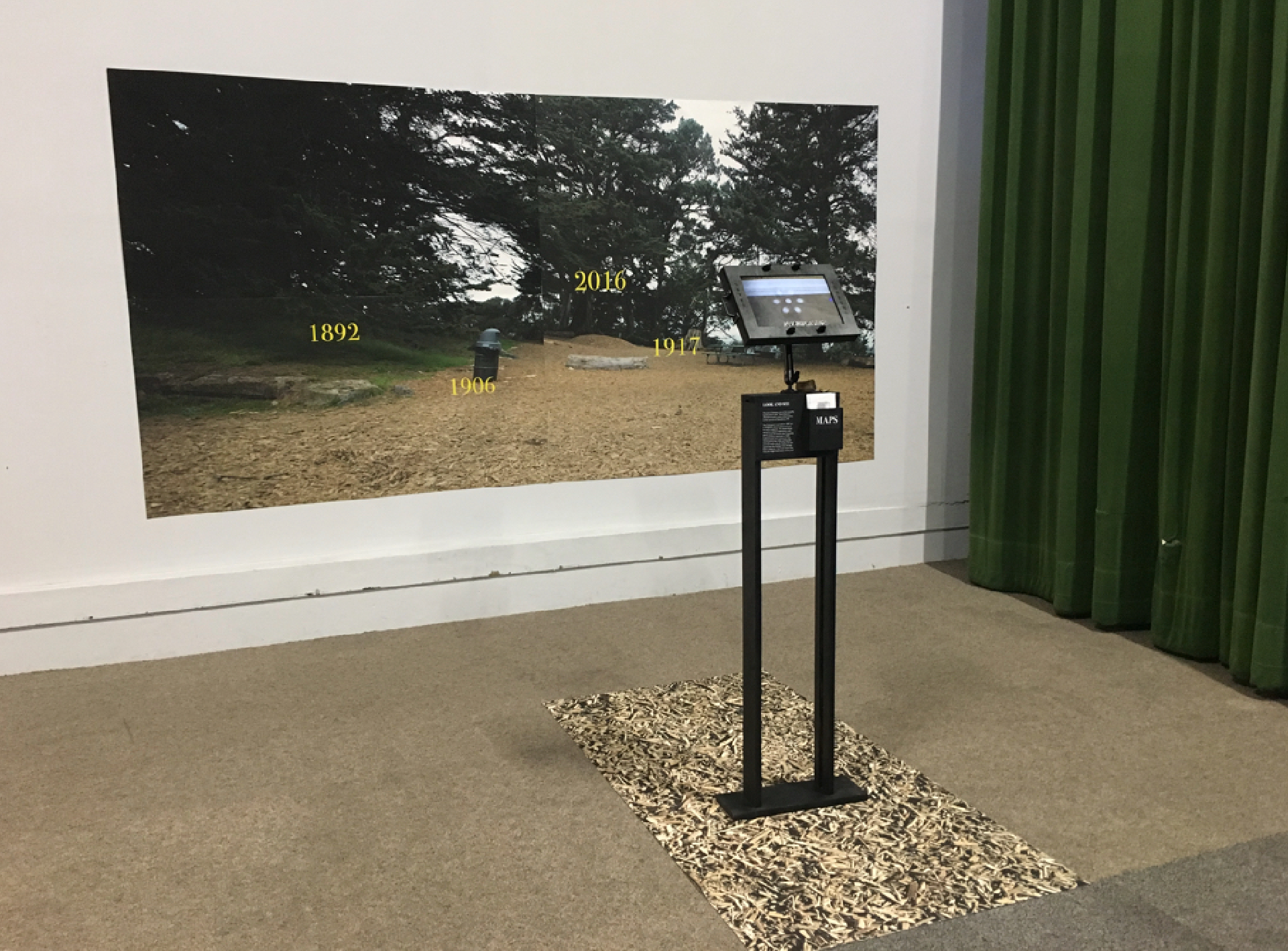
Sites Unseen
Prior to the earthquake in 1906, Strawberry Hill was a picnic destination with grand views of the Sand District. Today, little to no trace of the architecture remain. This public interactive uses augmented reality to revive the fallen architecture, the Sweeny Observatory Colosseum.
Prior to the earthquake in 1906, Strawberry Hill was a picnic destination with grand views of the Sand District. Today, little to no trace of the architecture remain. This public interactive uses augmented reality to revive the fallen architecture, the Sweeny Observatory Colosseum.
Exhibited at Gray Area Technology, SF

Hybrid Phonics
Hybrid Phonics is a multi-sensory transcription of 26 letters spoken in four languages. The goal of this experiment is to [de]construct the phonetic alphabet into a new graphic language that is both visual and audible.
Awards:
STA 100 Awards
Hybrid Phonics is a multi-sensory transcription of 26 letters spoken in four languages. The goal of this experiment is to [de]construct the phonetic alphabet into a new graphic language that is both visual and audible.
Awards:
STA 100 Awards


10e
10e is a web and print based index that organizes artists and designers based on ten elements of art and design. Taking inspiration from the Periodic table of elements, 10e organizes each artist (Ar) and designer (De) by prescribing 3 out of 10 elements that describe their work.
10e is a web and print based index that organizes artists and designers based on ten elements of art and design. Taking inspiration from the Periodic table of elements, 10e organizes each artist (Ar) and designer (De) by prescribing 3 out of 10 elements that describe their work.

